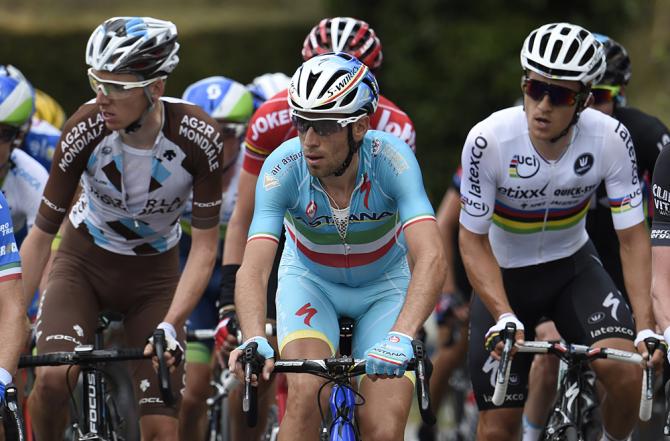Five conclusions from Liège-Bastogne-Liège
Evergreen Valverde, young Alaphilippe, the Belgians, Nibali and the new course
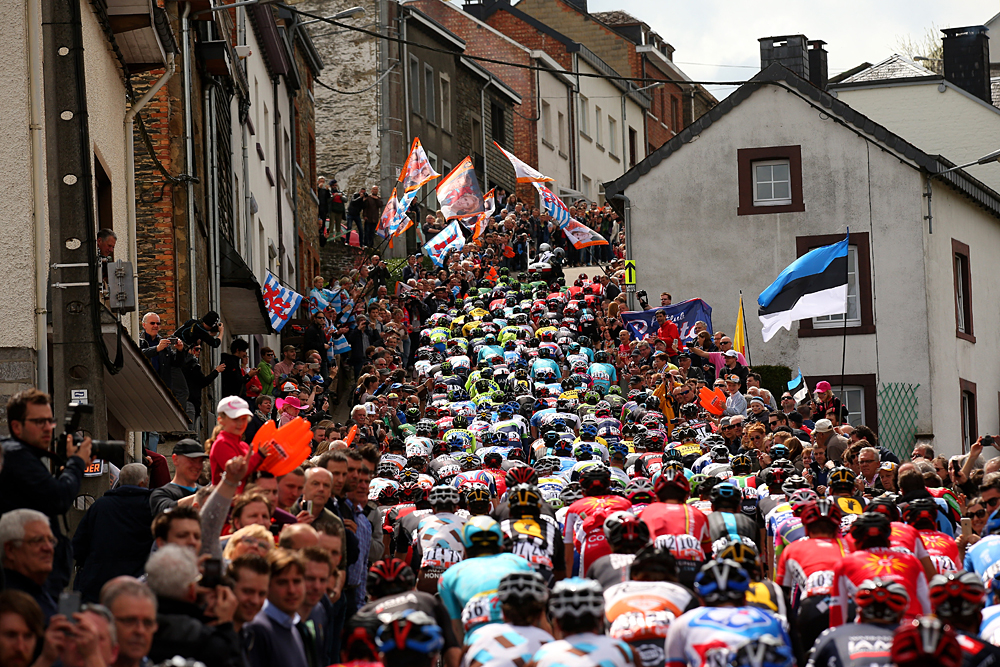
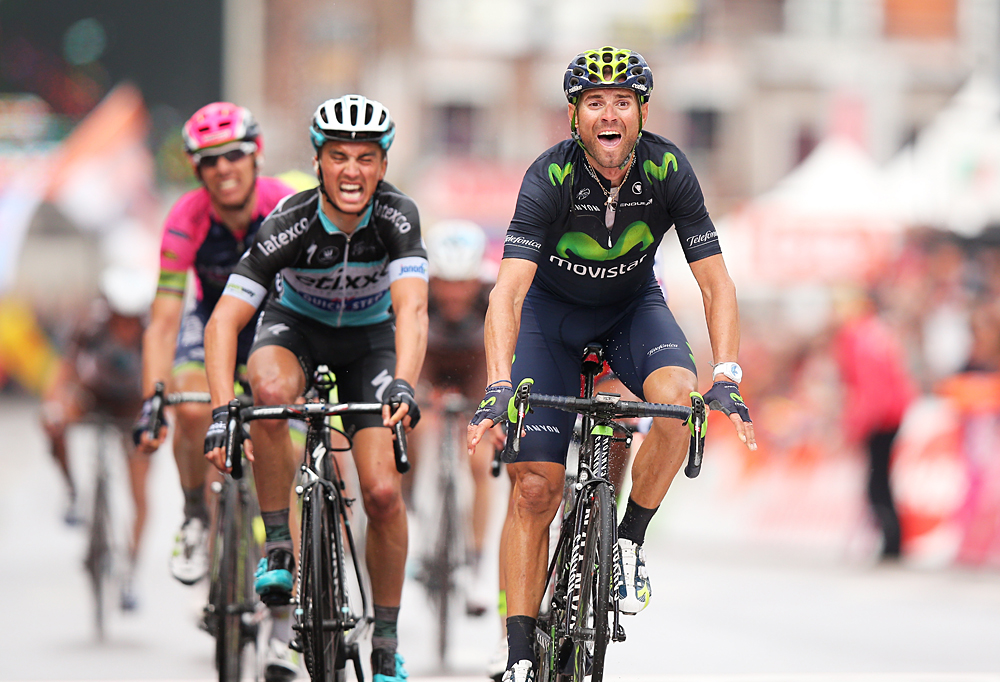
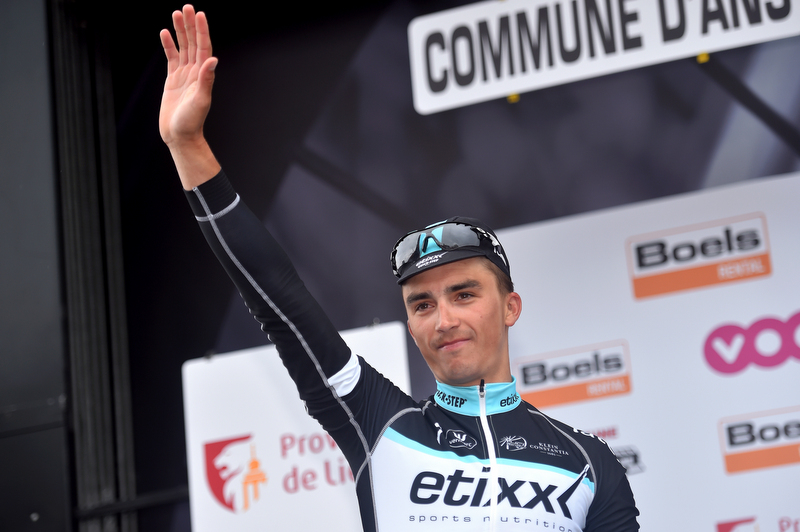
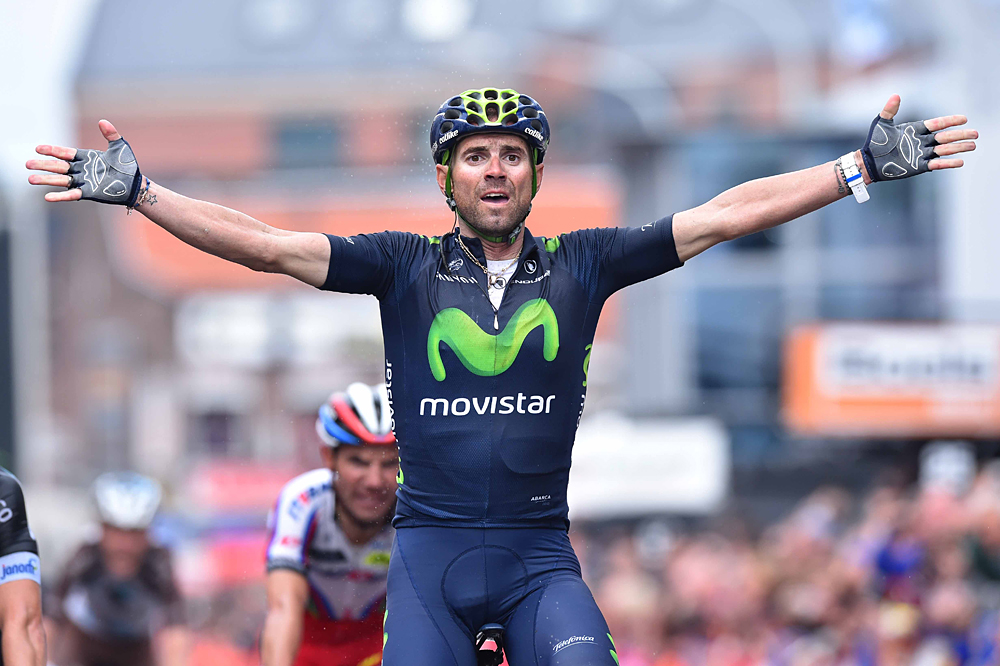
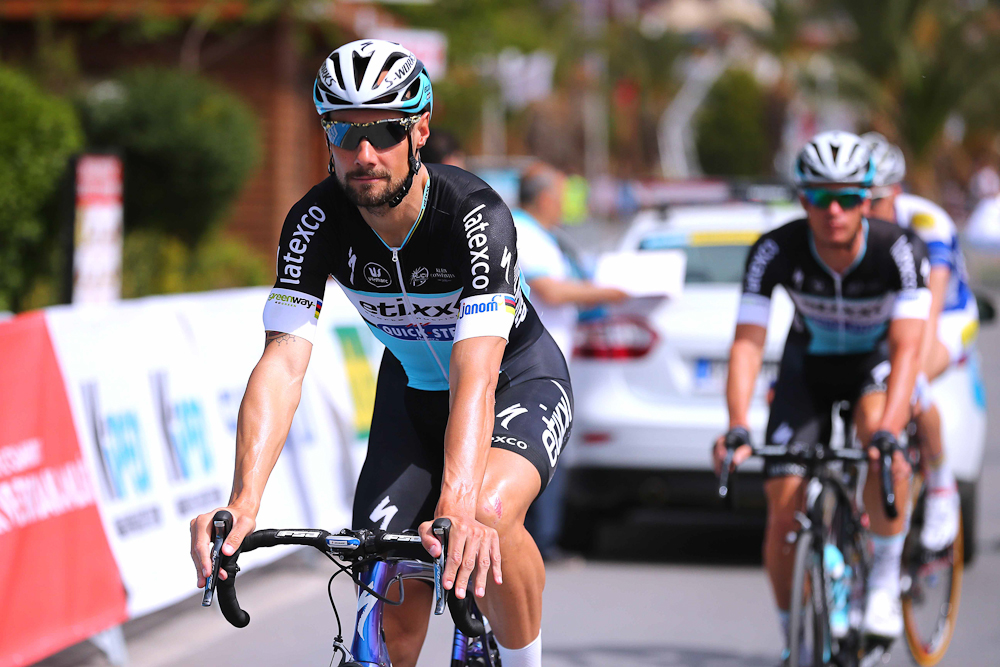
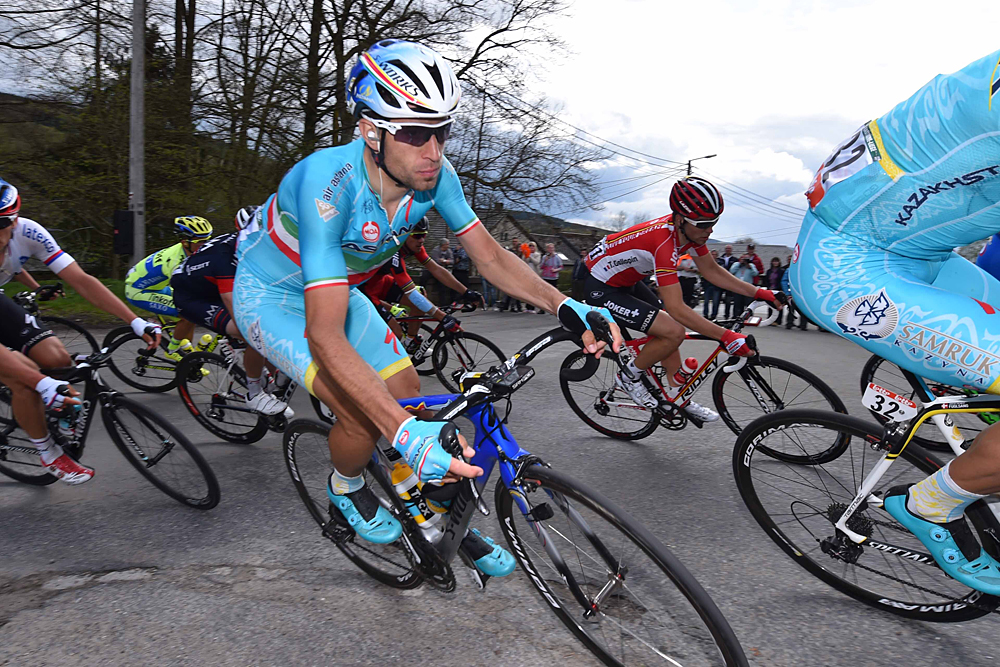
Evergreen Valverde
Valverde claims hat-trick of victories in Liège-Bastogne-Liège
Nibali unable to follow the favourites at Liège-Bastogne-Liège
Injured Gilbert fades in Liège-Bastogne-Liège finale
Crashes continue for Gerrans at Liège-Bastogne-Liège
Young Meintjes impresses at Liège-Bastogne-Liège
Alaphilippe takes France’s best Liège-Bastogne-Liège result since 1998
In a spring in which three top stars of the established generation of Classics riders - Philippe Gilbert (BMC), Tom Boonen (Etixx-QuickStep) and Fabian Cancellara (Trek Factory Racing) - have largely been sidelined by injuries, the fourth, Alejandro Valverde (Movistar) has continued to reign supreme.
Now 35, and with eight Classics in his palmares, Valverde's third Flèche Wallonne and third Liège-Bastogne-Lège wins may not yet mean he is rubbing shoulders with the very greatest Ardennes riders, but one or two more wins would make that a certainty. This year the Movistar leader pulled off the ninth Ardennes 'double' in history, but Valverde took his first in 2006, making him one of just two riders - and the first since Ferdi Kubler in 1952 - to have pulled off that particular achievement twice.
Valverde is frequently slated for his lack of tactical acumen in the World Championships, where he has taken five medals - a record - but never won a gold. At Amstel, too, one of the biggest gaps in his palmares, there have been a succession of near-misses. But at Flèche Wallonne his positioning on the Mur was as faultless as ever, and his setting of the exact pace needed to fend off the opposition before accelerating away was calculated to the last ounce of energy. And Liège, his recognition that he would have to take a risk and chase down Dani Moreno - effectively the moment he won the race - was carried out in equally accomplished style too.
So, even with a new-style finish for Flèche Wallonne like this year, and even when he starts the Liège-Bastogne-Liège knowing that his every move will be followed - Valverde's domination of the Belgian Ardennes shows no sign of ending. Yet. (AF)
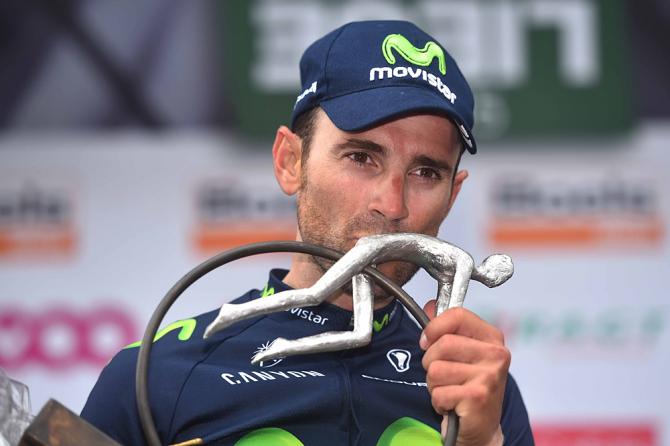
Julian Alaphilippe: France's next Monument winner?
Etixx-QuickStep's Julian Alaphilippe was so disappointed not to take victory at Liège-Bastogne-Liège on his first try, and that in itself speaks volumes about the young Frenchman. He made waves during the Ardennes beginning with a podium place at Flèche Wallonne and has been in much more demand than his world champion teammate Michal Kwiatkowski.
Get The Leadout Newsletter
The latest race content, interviews, features, reviews and expert buying guides, direct to your inbox!
With the French noticeable by their absence on the Ardennes rostrum, his achievements have had people sifting through the history books. Alaphilippe is the first rider to finish on the podium at his first attempt since Spaniard Iban Mayo in 2003. His second place at La Doyenne is also the first for his nation since Laurent Jalabert in 1998. It has been 18 years since France last won a Monument, with Jalabert beating Paolo Lanfranchi to the 1997 Giro di Lombardia title. Alaphilippe's second place will give them hope that this run could be close to its end.
Alaphilippe wasn't the only Frenchman to perform well on Sunday, with Romain Bardet's (AG2R-La Mondiale) sixth place showing that he's also moving in the right direction at the race. The 24-year-old was part of the French revival at the Tour de France last year and seems to be making steps forward in one-day racing too. Top finishes from Tony Gallopin (Lotto-Soudal) and Alexis Vuillermoz (AG2R-La Mondiale) at Amstel Gold and Flèche Wallonne are more positive signs that French racing is once again on the rise. (SO)
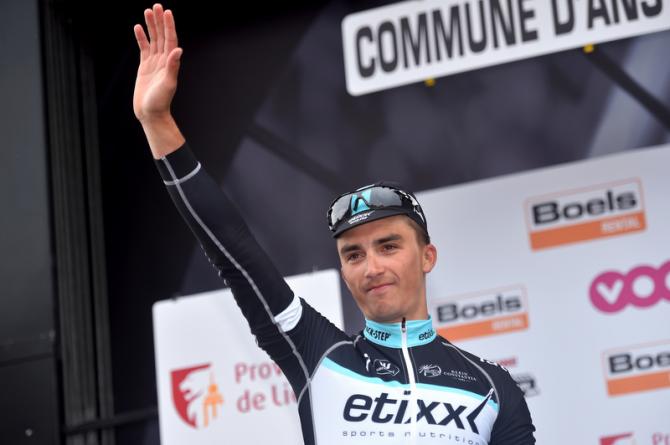
Did the new course do anything for Liège-Bastogne-Liège?
The new, more compact Liège-Bastogne-Liège parcours was a hot topic of discussion ahead of the race. With 10 less kilometres overall, the final climbs would come in much quicker succession making it harder for the riders to regroup between each ascent. Last year's race, save for some sporadic attacks in the final climbs, ultimately came down to the unclassified ascent into Ans. So did the new course do anything to light up the action?
In the grand scheme of things, the race followed much of the same format as it has in recent years. It wasn't until the race hit the punchy Côte de Stockeu that we saw some serious action coming from the peloton. Astana were the main animators, sending Michele Scarponi and Tanel Kangert up the road, thus beginning and interesting tactical battle between the teams of the race favourites.
Astana weren't the only team interested in forcing some aggressive racing with Tinkoff-Saxo, Katusha and AG2R-La Mondiale firing attacks off the front, knowing that if they took Alejandro Valverde (Movistar) to the line that they would struggle to beat the Spaniard. The relentless pace had the desired effect of significantly reducing the numbers of riders able in the main group of favourites, although the serious crash –which took out former champions Daniel Martin and Simon Gerrans - with just under 40 kilometres to go no doubt assisted in that.
This year's Liège-Bastogne-Liège was not a vintage edition but the new course, combined with the conditions and the aggressive approach that many teams employed did make for a much more interesting finale than we've had in recent years. (SO)
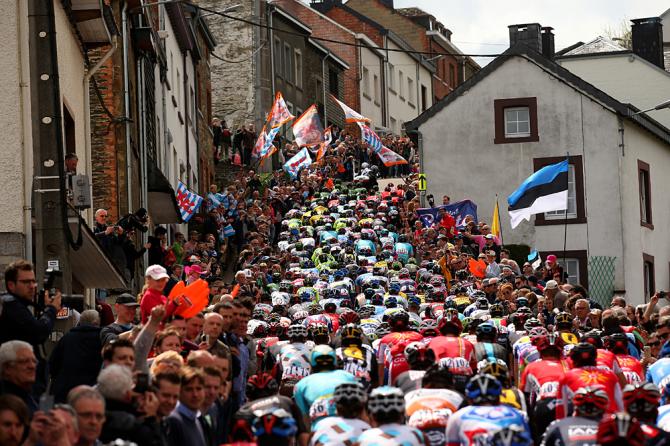
A bad year for the Belgians?
Next April it will have been four years since a Belgian rider raised his arms in victory in a Monument. That record is not nearly as dismal as the Italians' failure to net one of the five big one-day races, given their last was in 2008 in Il Lombardia. But as the curtain falls on another Spring Classics campaign the Belgians' tendency to be more thereabouts than there is a worry for the home fans in cycling's heartland.
For the Belgians, there have been some flashes of brilliance, some young talent coming through, and a lot of consistency. But above all Philippe Gilbert's failure to shine at Amstel Gold as expected, and Tom Boonen's Spring Classic season wrecked by a broken collarbone in Paris-Nice, have arguably played the biggest part in lowering Belgium's all-around performance.
Ben Hermans in Brabantse Pijl for BMC Racing and Jelle Wallays' win for Topsport in Dwars Door Vlaanderen were very promising build ups for the main Classics show, but never materialised into a sustained run of victories for the Belgians. Greg Van Avermaet (BMC Racing) was also in great shape and collected solid podium finishes in Flanders and Paris-Roubaix and well as fifth place in Amstel Gold and sixth in Het Nieuwsblad. Winning though, was another story.
Sep Vanmarcke (Lotto NL-Jumbo) has turned in some below-expectations rides, and Jurgen Roelandts (Lotto-Soudal) turned in a spectacular but ultimately unsuccessful performance at Gent-Wevelgem. The presence of a new, young face like Tiesj Benoot (Lotto-Soudal) in the top five of Flanders, Edward Theuns (Vlaanderen) taking runner-up spots in Scheldeprijs and Dwars Door Vlaanderen, as well as Tim Wellens' strong performance in Flèche Wallonne are hugely encouraging for the future. The present, though, remains another story.
A crucial footnote to the Belgian all-around performance is that if the riders did not quite deliver as expected, then their two WorldTour teams, Lotto-Soudal and in particular Etixx-QuickStep, have fought a dignified Classics campaign throughout. Lotto-Soudal punched above their weight, and Etixx-QuickStep's seven second places in the Classics, in addition to Mark Cavendish's win in Kuurne-Brussel-Kuurne and a victory on terrain usually as unproductive for them as Amstel, hardly constitutes a poor booty. Particularly, when their top one-day rider, Tom Boonen, has been sidelined through injuries since early March. Kwiatkowski's Amstel victory was the first for a Patrick Lefevere-run team since Johan Museeuw back in 1994. (AF)
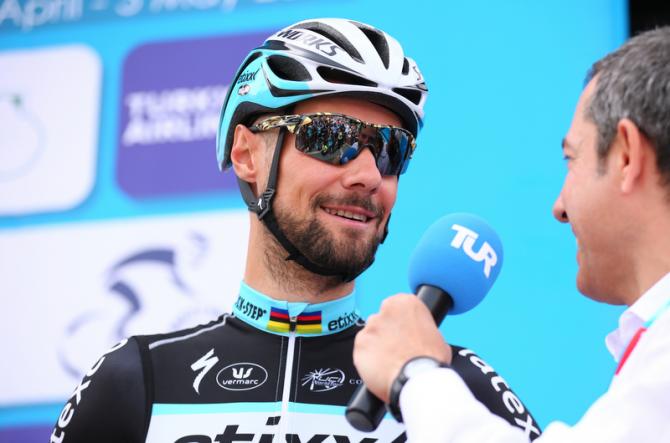
The shark attacks but nobody gets bit
Vincenzo Nibali and his team Astana had plenty of unfinished business in Liège on Sunday. After their tumultuous past eight months and tussles with the UCI Licence Commission ended with a lifting of their possible suspension, a big win or a podium would have given the Kazakh team a timely boost to their aim of focussing purely on sport from here on in.
And there can be no doubt that Astana gave it their best shot - as Nibali did in Amstel, when 'the Shark of Messina' prowled ahead of the peloton in impressively scary style in the closing kilometres and again in Flèche Wallonne on the Cote de Cherave.
At Liège-Bastogne-Liège, a race which figures large in the annals of Astana - it was won both by Alexandre Vinokourov and the disgraced Maxim Iglinsky in 2012, ahead (as chance would have it) of Nibali. Since then, Nibali has always made becoming the first Italian to win a Monument since Damiano Cunego in Il Lombardia, a big target.
The Italian had talked big, too, of his aim of making Liège as hard as possible, to wear out the all-arounders and create his own chances. And Astana's initial acceleration on the Stockeu with Andrei Grivko, a second big move with Michele Scarponi and Tanel Kangert that lasted as far as the Redoute, followed by a breakaway with Jakob Fugslang - who was already in a dangerous move in Amstel - all looked very promising.
But by his own admission, when push came to shove, although he provided some fireworks on the San Nicolas, Nibali found himself lacking in firepower. Instead, Fuglsang, with top-10 performances in Flèche and Liège, was his best performance overall. And just like in 2014, Nibali's success or failure will now be judged on the second half of the season. (AF)
